You are here
New Releases
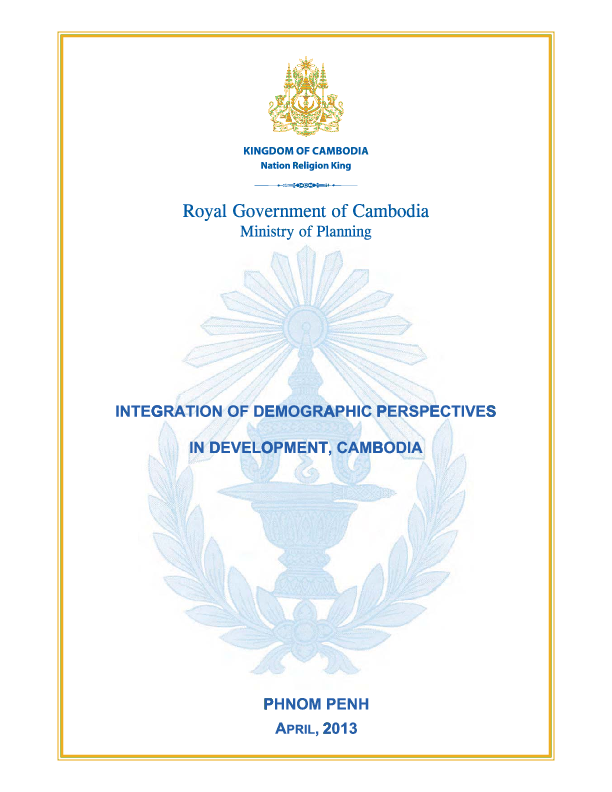
Integration of Demographic Perspectives in Development, Cambodia
The Royal Government of Cambodia since 1996 has made substantial efforts to integrate right'sbased approach in population and development planning. The Socio-Economic Development Plans followed by the Cambodian Millennium Development Goals and the subsequent Rectangular Strategy and Five-Year National Strategic Development Plans (NSDPs) are testimony to this fact.
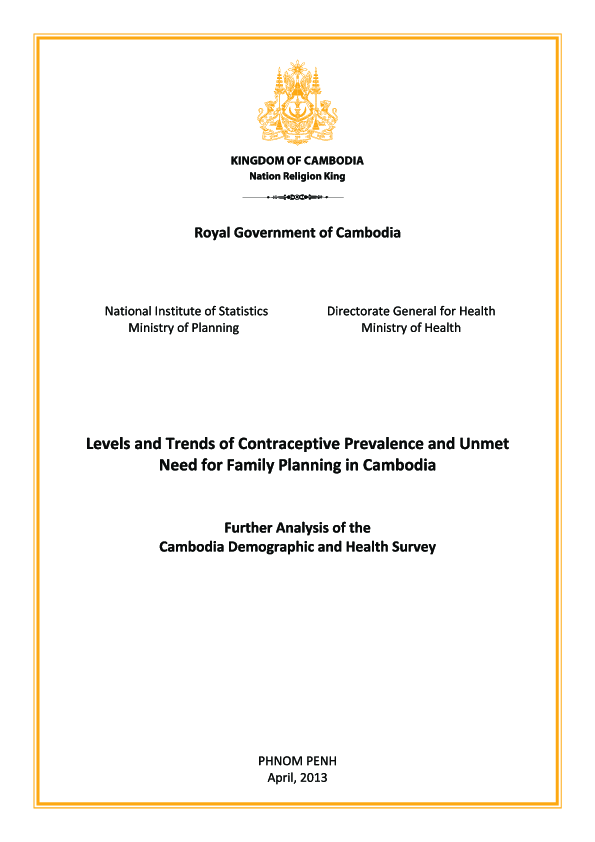
Levels and Trends of Contraceptive Prevalence and Unmet Need for Family Planning in Cambodia
This report presents findings from a secondary analysis study undertaken as part of the follow-up to the 2010 Cambodia Demographic and Health Survey (CDHS).
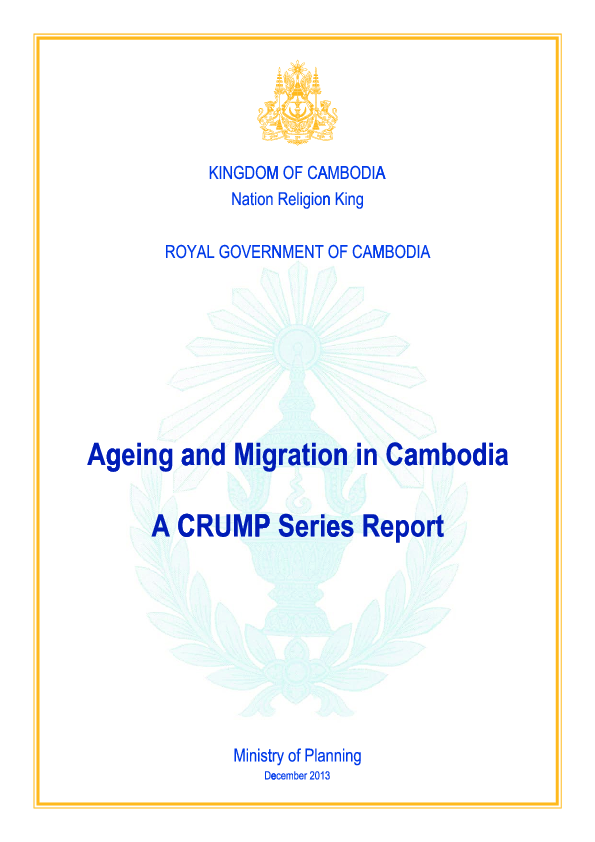
Ageing and migration in Cambodia
The report provides a broad look at the demographics of ageing in Cambodia and links the Cambodian Rural Urban Migration Project data to migration out of rural households and the situation of older persons in rural areas.
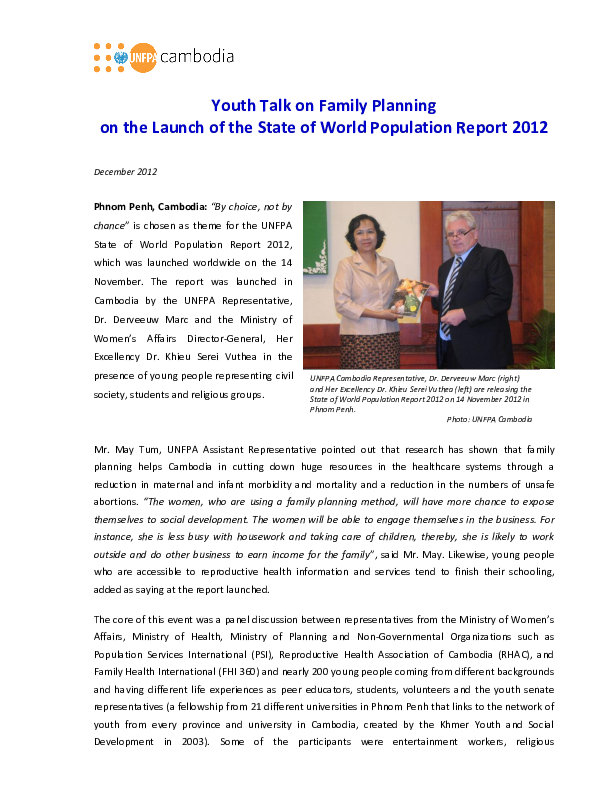
Cambodian youth and reproductive health: family planning
"By choice, not by chance" is chosen as theme for the UNFPA State of World Population Report 2012, which was launched worldwide on the 14 November.

Cambodia: decades of silent suffering
Although, Cambodian women developed Fistula or vesico vaginal fistula long time ago, they did not know it is a kind of reproductive disease until lately. The term Fistula or vesico vaginal fistula is not commonly known within the Cambodian culture as people are more familiar with "urine leakage or continuous loss of urine after they have gone through a difficult child delivery".
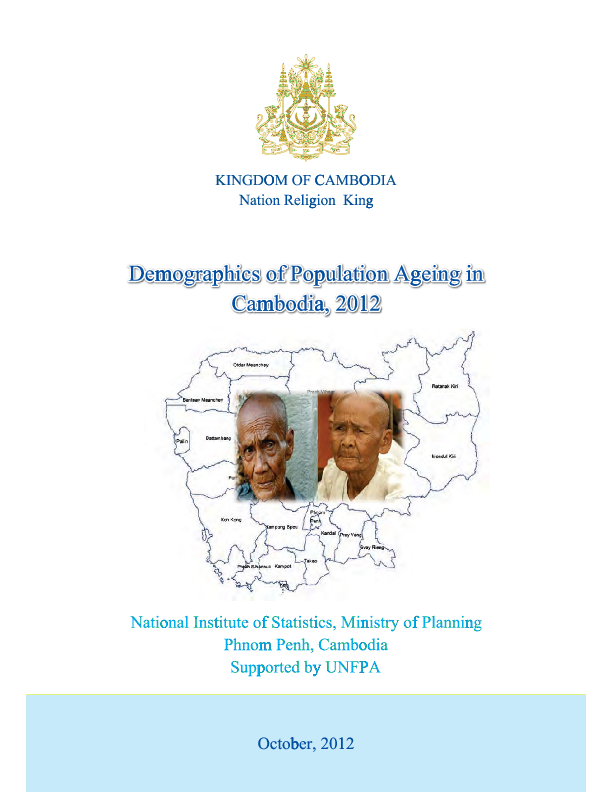
Demographics of Population Ageing in Cambodia, 2012
A major emerging demographic issue of the 21st century is the ageing of population as an inevitable consequence of the demographic transition experienced by most countries. Across the world, declining fertility and increased longevity have jointly resulted in higher numbers and proportions of older persons 60 years and above.
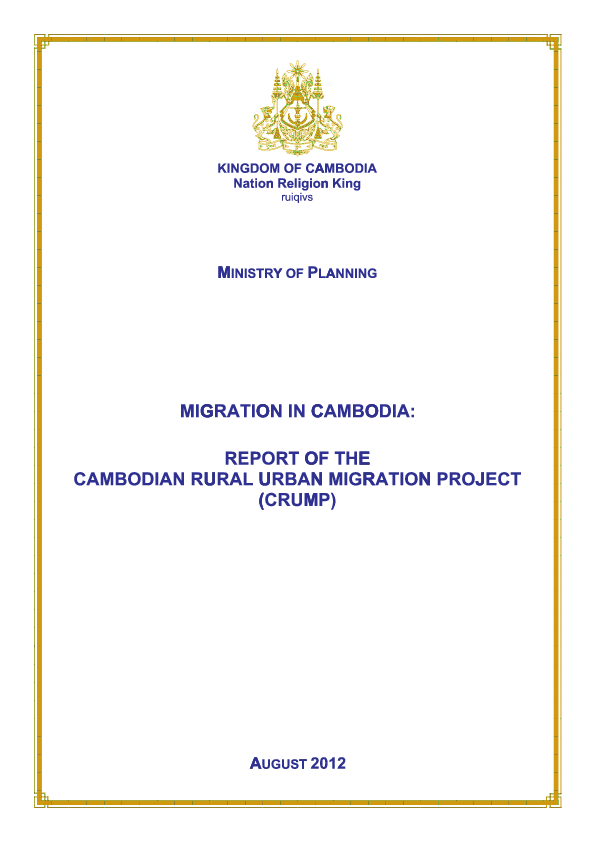
Migration in Cambodia
Over the last two decades, migration to the city of Phnom Penh, the country's capital city of Cambodia has been rapid. Cambodians have seen their capital grow by leaps and bounds every year. While Cambodia remains predominantly a rural country, enormous numbers of late have been streaming into Phnom Penh from rural areas in all corners of the country.
My story amongst 7 billions
On 31 October 2011, the world population reached 7 billion. Having based on the research document of the United Nations' Statistical and Demographic Office, it shows that in 1804 the world population was 1 billion. And 123 years later (in 1927), the population increased to 2 billion and it continued to grow to 3 billion in 1959 and kept increasing to 6 billion in 1999. A forecast has also been made for the next 14 years (in 2025). The result shows that the figure will be increased to 8 billion and it will ultimately reach 10 billion by 2083.
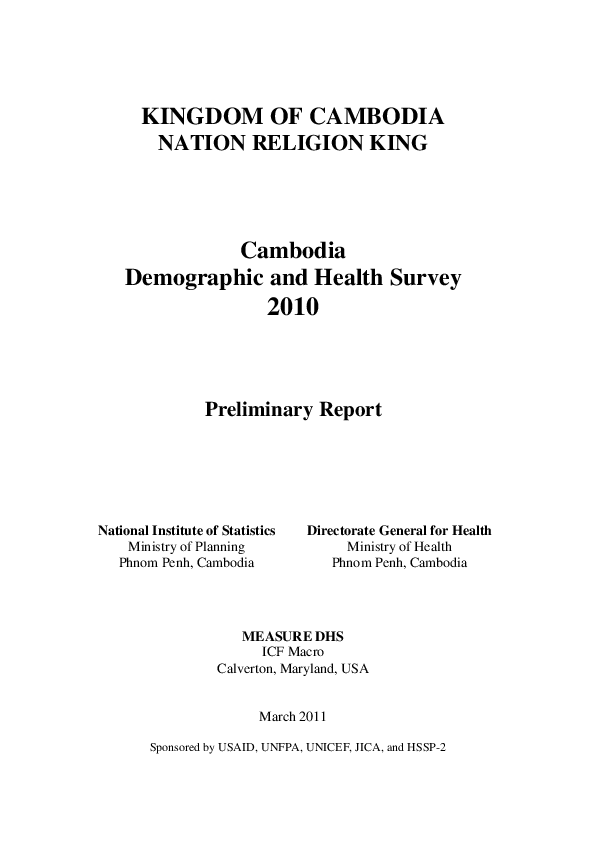
Preliminary report: 2010 Cambodia Demographic and Health Survey (CDHS)
The 2010 CDHS, the third of its kind, follows the surveys that were successfully conducted in 2000 (the 2000 CDHS) and in 2005 (the 2005 CDHS). The 2010 CDHS provides data to monitor the population and health situation in Cambodia. Specifically, the 2010 CDHS collected information on a broad range of demographic, health, and social issues such as household characteristics, utilization of health services, maternal and child health, breastfeeding practices, early childhood mortality, maternal mortality, nutritional status of women and young children, fertility levels, marriage, fertility preferences, awareness and use of family planning methods, sexual activity, and awareness and behaviour regarding AIDS and other sexually transmitted infections.

Reference Tool
The Reference Tool was developed in response to the needs from the ground for the use in local development planning process that covers three main issues: (1) Population and Development, (2) Gender and (3) Reproductive Health.